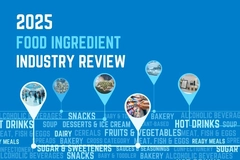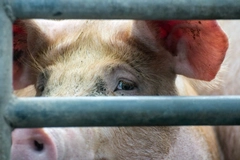
- Industry news
Industry news
- Category news
Category news
- Reports
- Key trends
- Multimedia
- Journal
- Events
- Suppliers
- Home
- Industry news
Industry news
- Category news
Category news
- Reports
- Key trends
- Multimedia
- Events
- Suppliers
Nestlé expands augmented reality technology to remotely connect to global facilities

24 Jul 2020 --- Nestlé is expanding the use of augmented reality technology to provide remote support to its production and R&D sites and to connect with suppliers. This comes as travel continues to be restricted due to the COVID-19 pandemic. The Swiss food giant and external providers are using remote assistance tools to connect with people at factories and other facilities around the world, increasing efficiency across operations and allowing experts to simultaneously support multiple projects.
Using tools such as remote desktop, smart glasses, 360-degree cameras and 3D software, specialists can advise on complex tasks without needing to travel to the site.
The technology has been used in projects such as the set-up or redesign of factory lines, vital maintenance work and checking equipment with suppliers.

There are many examples of remote support across Nestlé's factories and R&D facilities, including how R&D teams in Switzerland helped to remotely renew existing and install new production lines and technologies for a dairy ready-to-drink (RTD) factory in Navanakorn, Thailand. The factory was completed ahead of schedule.
The team also supported the installation of a new production line for infant cereals in Shuangcheng, China. Additionally, R&D expert teams in the UK worked with suppliers to remotely redesign and successfully test new confectionery molds for KitKat.
Other examples include maintenance work at factories in Columbia and Ecuador or setting up a new pet food line in the US.
"Protecting our people is a top priority for Nestlé, something that has been clearly demonstrated time and time again during the COVID-19 crisis. The remote support approach is not just a response to COVID-19 though. Going forward, remote assistance will become a new way of working,” says David Findlay, Global Head of Manufacturing at Nestlé.
“It will increase speed and efficiency in facilities and reduce travel to Nestlé sites, helping us reduce CO2 emissions across our operations. I am extremely proud that our teams have been able to expand our use of remote assistance technology so quickly to ensure we were able to continue to provide technical support. That has kept our factories running smoothly and delivered new investment projects on time," he notes.
"To ensure business continuity, we accelerated the use of remote assistance and augmented reality technologies across our global R&D organization,” adds
Thomas Hauser, Head of Nestlé Product & Technology Development. “These innovative technologies enabled our experts to provide support to our factories worldwide for critical activities such as the new set-up of production lines, as well as new equipment start-up, helping us to ensure that new product launches were delivered on time to consumers."
Nestlé engineers are continuously scouting for and prototyping emerging technologies. They had already established virtual reality capabilities, and remote guidance had been used with limited scope on several projects.
With restrictions on travel, quarantine measures and the need to maintain distancing on-site with the spread of COVID-19, the need for this innovative approach increased.
"While we were able to quickly activate augmented reality remote support as part of our global COVID-19 IT response, this was not an overnight fix. It is based on our disciplined, forward-looking approach to innovation throughout our operations," says Filippo Catalano, Nestlé Group CIO.
Nestlé is transforming its operations by further digitalizing its supply chains and manufacturing. The goal is to create a competitive edge through data, artificial intelligence, automation and predictive analytics.
Digitalization can also help meet environmental targets such as cutting emissions. Nestlé has committed to achieving net-zero emissions by 2050.
Edited by Gaynor Selby










